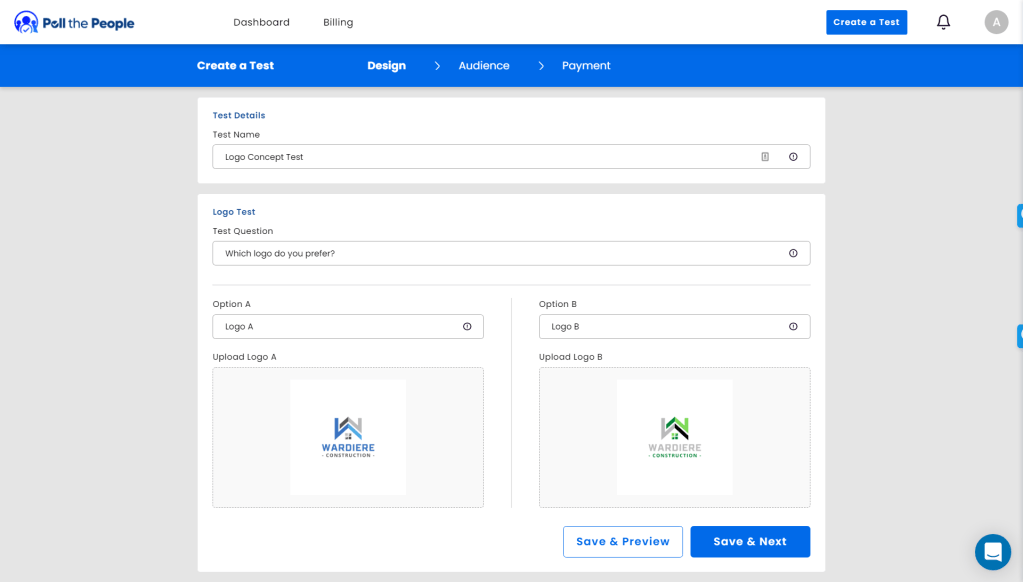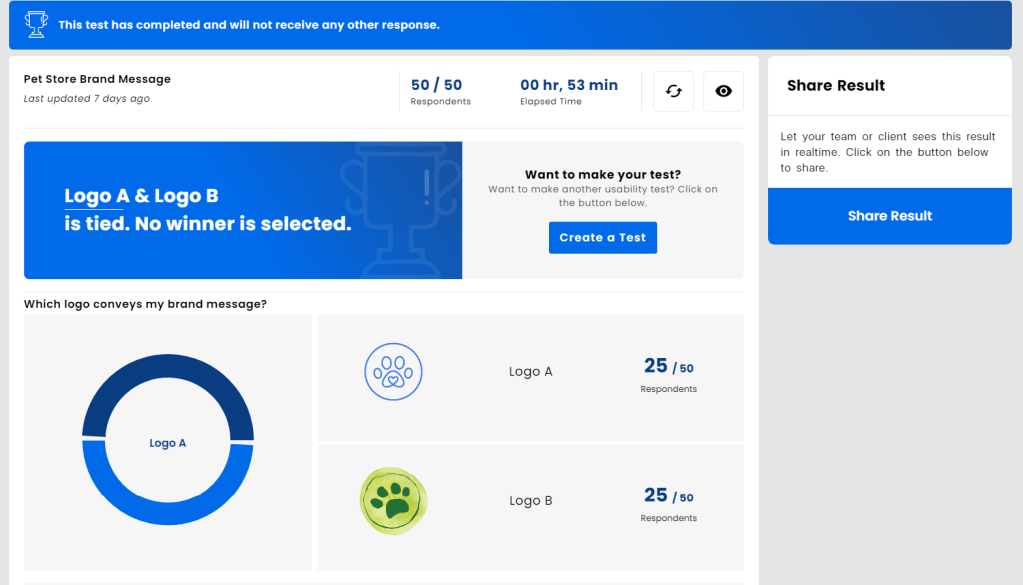
Getting user feedback on visual designs is a straightforward process for a lot of user experience design teams. But sometimes test designs that have rough drafts or fuller content often without realizing that more complete and meaningful content would change the test results and framework of the test.
Without testing the content that goes into these designs, they miss out on opportunities to learn how the content impacts the users and reacts to tones, word choice, and structure. The most effective user experience teams, test more complete content during the design stage, they don’t wait to test until after the designs are done. This is because they know impactful content is in resonating with the audience.
However, choosing the appropriate content comes from a thorough content testing procedure and is not something that can be done based on intuition or guesswork.
This post will define content testing, discuss the content testing options accessible to you, and explain how to organize and carry out your tests using Poll the People.
What is Content Testing?
Marketers and content strategists frequently utilize content testing as a component of content marketing promotion strategy.
Content testing is a customer research approach to determine what language, wording, and tone the potential customers can identify, understand, and interact with the most. If done correctly, it will assist you in identifying the content that viewers enjoy and want to see more of.
Initially, it must be done when you start creating designs. Moving forward, it should continue anytime new content is added. What language does the audience use and respond to? Listen to how they explain these topics, how they describe the product or service, and how they think about the words they don’t use.
From there, you can develop language and value propositions to effectively communicate the topic. You can produce content that you know your users will like, once you’ve used content testing to establish the baseline.
In a nutshell, content testing is a research technique used to determine whether your material is engaging for readers and users. By doing content testing, you can determine whether the information you provide speaks directly to users’ problems and provides enough context to enable users to achieve their goals.
Why is Content Testing Important?
From the homepage to the product page, buttons, navigation, menus, and even blogs, testing copy before they go live will help you identify the copy that works best and what misses the mark.
Bad content can ruin a user’s experience with a product, leave them confused or uninterested, and even make them decide not to use it at all. On the other hand, the user experience (UX) can be made more effective by good content, preventing confusion or disruption among users.
Testing copy before it goes live will help you figure out what works best and what doesn’t, from the homepage to the product page, tabs, accessibility, buttons, and even blog posts.
You’ll find out whether the content you provide engages consumers, addresses their problems, and motivates them to find out more or buy anything.
You’ll figure out the vocabulary, language, and content that your target market wants to hear, as well as what doesn’t work and, most importantly, why.
Content affects all other facets of your product, making content testing an important part of the content strategy. Who knows, you might find something you never thought of.
6 Ways to Evaluate Content
Six elements make up your content, each can be tested to make the best content for your users. Usability, readability, searchability, navigability, accessibility, and tone or voice are the six main criteria used to assess the content.
1. Usability Testing

Testing for usability determines how simple it is to interact with content.
Is the content understandable? Is it clear to the reader what you want them to do? Do your main ideas, phrasing, and word selections relate specifically to the user pain points?
Usability testing measures how simple it is to interact with the content of your product. When developing content, you aren’t given a thousand or more words to explain something, unlike when writing an article. Everything should be concise, therefore if your customers need to read a manual to utilize your product, something is obviously wrong.
2. Readability

How easily and clearly the content is understood can be determined by its readability.
Are you speaking to them in the same voice and vocabulary as your audience prefers? Is it simple and easy to read the font? Does the reader need to reread the material in order to understand it? Are your CTAs compelling and clear?
This one is straightforward, you want your users to be able to read your content. The quality of the content needs to be enhanced if a reader needs to read a sentence several times before understanding it. Do not forget that your readers will prefer to scroll the text than have to reread every single word.
3. Searchability
How simple it is for people to find the content, webpages, or information they need online is measured by searchability.
Is the content ready for search engine optimization so it will show up in search results? Does the content show up in the middle or at the top of the search results?
This all has to do with search engine optimization (SEO) and determines how simple it is for internet users to find your website or services. Getting the content on your web pages properly can significantly boost the number of people who find and read your material because it influences Google’s rankings in a significant way.
4. Navigability
How simple it is for visitors to navigate through the content on your website is determined by its navigability.
Can users locate the information they need? Do the menus and layout effectively link the appropriate content together? How long or how many steps are required for consumers to reach their destination?
The ease with which a user can navigate a website from beginning to end is known as navigability. All of these elements create simple and engaging interactions for users. Every website owner should continuously strive to develop great navigability because it is directly tied to the customer experience on the website.
5. Accessibility
A product, service, or system’s accessibility influences how simple it is for consumers to locate and use them.
Is it search engine optimized to show up in results? Does it support a variety of devices and web browsers?
The ability of your product to be used by as many individuals as possible is referred to as accessibility. Good accessibility guarantees that anyone can use your product. By doing this, you not only reach a larger audience, but you also produce a product that everybody can use.
6. Tone and Voice

Tone and voice testing help you learn if the language selected reflects the brand message.
Is the voice and tone consistent across all content? Does the tone change with different types of content?
Finally, you should focus on the voice and tone of your content. Your brand has a voice that is used in the content to communicate with customers.
The written content on a company’s website, social media accounts, and emails all fall under the umbrella of its online tone or voice. Additionally, it conveys the company’s character, fundamental principles and distinguishes it from competitors.
2 Ways to Test Content with Poll the People
It can be challenging to choose the appropriate stage for testing your content. On one hand, you wish the content to be accurate in terms of what your users will actually see. On the other hand, you don’t want to spend a lot of time developing content that is finished and fully formed only to find out that your users don’t need it. In the end, content testing is most effective when done continuously at various stages of the design process, just like most research and user testing.
With Poll the People, there are two methods to test the content, and both are important and relevant based on your objectives and use case.
1. Usability Testing

A great way to make sure you and your users agree on the content being utilized is through usability testing. Some of your content might not meet user needs or expectations, it might just be the distinction between “settings” and “preferences.”
In order to determine what content is clear as well as engaging and what content needs to be changed, Usability testing has participants complete tasks or answer questions on your content.
To evaluate how well the information is understood, ask users to browse a feature, section, concept, etc., and then ask them to describe what they understood and what they didn’t.
A remote and unmoderated platform like Poll the People is efficient, quick, and less expensive for testing content. You’ll be able to tell if the material is engaging for the users and if changes need to be made in order to increase engagement.
This method of testing will give you qualitative and quantitative data on which content might need to be updated or improved. Observe the users’ behavior in addition to what they say during the test because the two can sometimes be the contradictory statements.
After just a few tests with Poll the People, you’ll start to identify the material that best represents your brand and what doesn’t, allowing you to customize it to your consumers’ expectations.
Check out this page for a thorough overview of everything you need to know about usability testing using Poll the People.
2. A/B Testing

In A/B testing, two versions of the same piece of content are created and compared. You can get quantifiable information about which content performs better.
With this kind of testing, you can simply identify a winning version, thanks to the quantitative data. Though to be successful, you must have a considerable sample size for statistical significance.
A/B test’s results may show that customers like one phrase or tone over another, but it usually doesn’t explain why.
But, with Poll the People, respondents are required to provide you with a written response outlining their decision and explaining why. A/B testing is often a quantitative study, but Poll the People provides both qualitative and quantitative data.
You may discover the material that works best for your business and improve content for any area of your business by utilizing one of these two content testing methods.
Conclusion
Testing content can be a difficult but important process. Luckily, Poll the People makes it quick and simple.
Let’s step back from how we as marketers view the creation and value of content. In the end, if the information is difficult to understand or not useful to the audience we are generating it for, neither we nor they will benefit from it.
To make informed decisions, it is important to use procedures that produce reliable insights. Any design team should continue doing so both throughout and after any content has been added or modified.
You’ll see increased traffic, engagement, and conversions that have an impact on your bottom line by content testing to determine the words, phrases, tone, and language that people respond to.
If you found our article to be helpful, please share it with others so they can avoid making the same mistakes or facing similar difficulties while attempting to build the best user experience. If you’re ready to start testing your content, sign up now to start making better content!
- How To Retain SEO Ranking After A Redesign - February 22, 2023
- Ultimate Guide: How to Write Brand Names - February 17, 2023
- 10 Best Practices for Using Video in Your Email Marketing Campaigns - February 8, 2023




